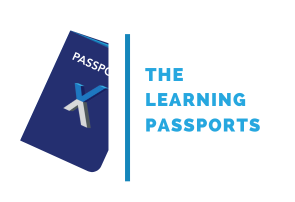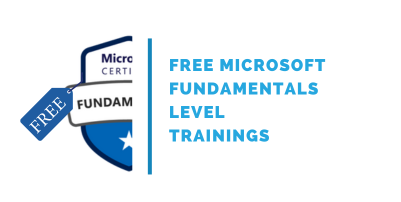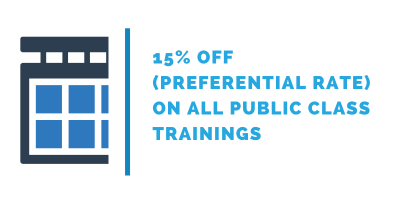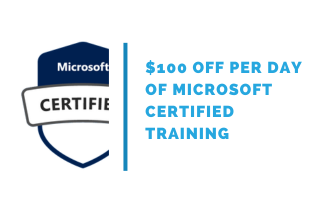
Microsoft Certified: Power Platform Solution Architect Expert (PL400-600)

This eight-day certification track training is composed of two parts:
Microsoft Power Platform Developer (PL-400T00)
In this five-day Microsoft certified course, students will learn how to build Power Apps, Automate Flows and extend the platform to complete business requirements and solve complex business problems.
Power Platform Solution Architect (PL-600T00)
In this three-day Microsoft certified course, students will learn about decisions a Solution Architect makes during an implementation, covering security, integrations, Power Apps architecture, Power Automate architecture, and more.
This training is a comprehensive preparation to the exams PL-400 and PL-600 to help participants obtain the Microsoft Certified: Power Platform Solution Architect Expert certification.
You can purchase an individual part of this certification track - contact us for the details.

Public class
4595$
Duration:
8 days / 56 hours
Private class
Virtual classroom
Minimum no. of participants: 5
8 days / 56 hours
Price on request
English or French
Training plan:
Microsoft Power Platform Developer (PL-400T00)
Module 1: How to build your first model-driven app with Dataverse
- Introduction to Dataverse
- Introduction to model-driven apps
- Model-driven apps, powered by Microsoft Dataverse
- Explore sample apps
Module 2: Get started with model-driven apps in Power Apps
- Introducing model-driven apps
- Components of model-driven apps
- Design model-driven apps
- Incorporate business process flows
Module 3: Manage tables in Dataverse
- Identify tables and table types in Dataverse
- Create a custom table
- Enable attachments within a table
- Licensing requirements for each table type
Module 4: Create and manage columns within a table in Dataverse
- Define columns in Microsoft Dataverse
- Column types in Microsoft Dataverse
- Add a column to a table
- Create a primary name column
- Restrictions that apply to columns in a table
- Create an auto numbering column
- Create an alternate key
Module 5: Working with choices in Dataverse
- Define choice column
- Standard choices column
Module 6: Create a relationship between tables in Dataverse
- Relate one or more tables - Introduction
- Relationship types that are available in Microsoft Dataverse
- Create a one-to-many relationship between tables
- Create a many-to-many relationship between tables
- Edit or delete relationships
Module 7: Define and create business rules in Dataverse
- Define business rules - Introduction
- Define the components of a business rule
- Create a business rule
Module 8: Create and define calculation or rollup columns in Dataverse
- Introduction to rollup columns
- Create a rollup column
- Introduction to calculation columns
- Create a calculation column
Module 9: Get started with security roles in Dataverse
- Introduction to environment roles
- Understand environment roles
- Adding or disabling an environment user
- Understand security concepts in Dataverse
- Understand user security roles and security role defaults
- Check the roles that a user belongs to
- Configure Dataverse teams for security
- Configure Dataverse group teams for security
Module 10: Get started with Power Apps canvas apps
- Introduction to Power Apps
- Power Apps building blocks
- Ways to build Power Apps
- Power Apps related technologies
- Additional Power Apps related technologies
- Designing a Power Apps app
Module 11: Customize a canvas app in Power Apps
- Improve apps by making basic customizations in Power Apps
- Create a navigation model for your canvas app
- Explore screens and controls in Power Apps
Module 12: Manage apps in Power Apps
- Power Apps review
Module 13: Navigation in a canvas app in Power Apps
- Understanding navigation
- The navigation and back function
- More ways to use the navigation function
Module 14: How to build the UI in a canvas app in Power Apps
- Use themes to quickly change the appearance of your app
- Branding a control
- Icons
- Images
- Personalization
- Using the tablet or phone form factors
Module 15: Use and understand Controls in a canvas app in Power Apps
- Introduction to controls
- Core properties of controls
- Entering and displaying data with text controls
- Additional controls for enhancing your app's usability
- Media
Module 16: Document and test your Power Apps application
- Create test plans
- User interface testing
- Performance optimization
- Diagnostics and analytics
- Documentation and the customer
Module 17: Use imperative development techniques for canvas apps in Power Apps
- Imperative versus declarative development
- The three types of variables in Power Apps
- Global variables
- Contextual variables
- Collections
- Additional variable concepts
Module 18: Create formulas that use tables, records, and collections in a canvas app in Power Apps
- Formulas that process multiple records
- Math operations on tables
- Combine and separate records
- The ForAll function
Module 19: Perform custom updates in a Power Apps canvas app
- Sometimes you need something more than forms
- Using the Patch function to create and edit records
- Deleting record(s) from data sources and collections
- Using Patch function to update a Gallery
Module 20: Complete testing and performance checks in a Power Apps canvas app
- The importance of thinking about performance
- Improve performance with data sources
- Testing and troubleshooting your app
Module 21: Work with relational data in a Power Apps canvas app
- What is relational data?
- Work with relationships in Power Apps
- Microsoft Dataverse for apps makes relationships even easier
Module 22: Work with data source limits (delegation limits) in a Power Apps canvas app
- Delegation overview
- Functions, predicates, and data sources combine to determine delegation
- Delegation warnings, limits, and non-delegable functions
Module 23: Connect to other data in a Power Apps canvas app
- Overview of the different data sources
- Work with action-based data sources
- Power Automate is a companion to Power Apps
Module 24: Use custom connectors in a Power Apps canvas app
- Overview of custom connectors
- Overview of the custom connector lifecycle
- Use postman for your custom connector
Module 25: Get started with Power Automate
- Introducing Power Automate
- Troubleshoot flows
Module 26: Build approval flows with Power Automate
- Provide solutions to real-world scenarios
Module 27: Introduction to expressions in Power Automate
- Introduction to expressions
- Get started with expressions
- Notes make things easier
- Types of functions
- Write complex expressions
Module 28: Introduction to Microsoft Power Platform developer resources
- Introduction to Microsoft Power Platform for Developers
- Overview of Microsoft Dataverse and the Common Data Model
- Extending Power Platform with Azure
Module 29: Use developer tools to extend Microsoft Power Platform
- Introduction to developer Microsoft Power Platform tooling
- Solutions overview
- Deploy apps with Package Deployer
Module 30: Introduction to extending Microsoft Power Platform
- User experience extensibility
- Microsoft Dataverse extensibility
- Determine when to configure or when to code
Module 31: Introduction to Dataverse for developers
- Introduction to developing with Microsoft Dataverse
- Microsoft Dataverse extensibility model
- Event framework
Module 32: Extend plug-ins in Power Platform
- Introduction to Plug-ins
- Plug-ins usage scenarios
- Custom workflow extensions
- Plug-in execution context
Module 33: Perform common actions with client script in Power Platform
- Introduction to client-side scripting
- Upload scripts
- Event handlers
- Context objects
- Client scripting common tasks
Module 34: Automate business process flows with client script
- Introduction to conducting global operations with the client API Xrm object
- Client scripting best practices
- Debugging client script
Module 35: Get started with Power Apps component framework
- Introduction to Power Apps component framework
- Power Apps component framework architecture
- Power Apps component tooling
- Demo of Power Apps code component
Module 36: Build a Power Apps component
- Introduction to creating a code component
- Create a code component solution package
- Test and debug code components
Module 37: Use advanced features with Power Apps component framework
- Introduction to using React within a Power Apps component
- Use the formatting API in a Power Apps component
- Use the Microsoft Dataverse web API in a Power Apps component
- Write a pop-up Power Apps component
Module 38: Access Dataverse in Power Apps portals
- Use table lists to display multiple Microsoft Dataverse records
- Use table forms to interact with Microsoft Dataverse data
Module 39: Extend Power Apps portals
- Portal application lifecycle management
- Extend with scripts
- Advanced CSS
- Advanced client-side development
Module 40: Build custom Power Apps portals web templates
- Introduction to portal web templates
- Create web templates
- Web templates as API
Module 41: Work with Dataverse Web API
- Introduction to the Microsoft Dataverse Web API
- Authenticate against Microsoft Dataverse by using OAuth
- Interact with Microsoft Dataverse Web API by using Postman
- Use OData to query data
- Use FetchXML to query data
- Call Power Automate actions from the Web API
- Use the Web API to impersonate another user
- Track entity data changes with change tracking and the Web API
Module 42: Integrate Dataverse Azure solutions
- Microsoft Dataverse Azure Solutions overview
- Expose Microsoft Dataverse data to Azure Service Bus
- Write a Service Bus Event Listener that consumes Microsoft Dataverse messages
- Publish Microsoft Dataverse events with webhooks
- Write an Azure Function that processes Microsoft Dataverse events
Power Platform Solution Architect (PL-600T00)
Module 1: Becoming a solution architect for Dynamics 365 and Microsoft Power Platform
- Introduction to becoming a solution architect
- Existing product and platform skills
- Expectations of a solution architect
- Solution architect role during project phases
- Pillars of a great architecture
Module 2: Discover customer needs as a Solution Architect for Dynamics 365 and Microsoft Power Platform
- Introduction and discovery overview
- Initial customer discovery
- Customer discovery meetings
- Customer communication strategy
Module 3: Propose a solution as a Solution Architect for Microsoft Power Platform and Dynamics 365
- Introduction and overview to proposing a solution
- Identify solution components
- Develop and validate a demo
- Identify potential third-party components
- Recognize strengths and weaknesses in a solution
Module 4: Work with requirements for Microsoft Power Platform and Dynamics 365
- Lead requirement capture sessions
- Identify functional requirements
- Identify non-functional requirements
- Confirm and finalize requirements
Module 5: Perform fit gap analysis
- Introduction to fit gap analysis
- Determine feasibility of requirements
- Refine requirements from proof of concept insights
- Categorize business requirements and perform gap fit analysis
- Evaluate Dynamics 365 and Microsoft Power Platform apps
Module 6: Solution Architect series: Implement project governance for Power Platform and Dynamics 365
- Introduction to project governance
- Project governance
- Solution architect’s role in project governance
- Techniques for keeping a project on track
- Work as a team
Module 7: Solution Architect series: Power Platform architecture
- Environments
- Environment data location
- Work with data
- Custom logic
- Platform limits
- High availability and disaster recovery considerations
Module 8: Solution architect series: Model data for Power Platform solutions
- Common Data Model
- Data modeling
- Choose a data store
- Data modeling for Dataverse
- Best practices for Dataverse
- Architecture of Fabrikam data model and devices
- Report data and handle primary visitors
- Handle visitors, waivers, and photos
- Example data model solution
Module 9: Solution Architect series: Evaluate Power Platform analytics and AI
- Power Platform reporting capabilities
- Power BI overview
- Data requirements
- Power BI and Power Platform
- Dataflows
- AI
Module 10: Solution Architect series: Explore Power Apps architecture
- Common app patterns
- App composition
- Components
- Optimize canvas apps
- Microsoft Teams and Power Apps
- Portal apps
Module 11: Solution Architect series: Plan application lifecycle management for Power Platform
- Key considerations for ALM
- Solutions
- Configuration and reference data
- Release process
- ALM with Azure DevOps
Module 12: Explore Power Automate architecture
- Triggers
- Common actions
- Error handling
- Best practice
- Business process flows
Module 13: Solution architect series: Model security for Power Platform solutions
- Environment security
- Data loss prevention
- Access to Dataverse
- Security in apps
Module 14: Solution Architect series: Implement integrations with Power Platform
- Integration challenges
- Inbound data integration
- Outbound data integration
Module 15: Solution architect series: Explore Power Virtual Agents
- Chatbot building options
- Chatbot concepts
- Best practices
- Integrate chatbots
- Power Virtual Agents in Teams
Module 16: Solution architect series: Explore robotic process automation
- Power Automate for desktop
- Record and edit tasks
- Run desktop flows
- Process advisor
Module 17: Solution Architect series: Testing and go-live
- Plan for go-live
- Data migration
- Plan for go-live
Exclusives:
- One FREE attendance to the Microsoft 365 Certified: Fundamentals (MS900) training - $695 value!
- Two vouchers to take the exams - $450 value!
- One year access to the class recording
- 180 days access to the lab environment after class
- Up to date courseware with Microsoft Learn
- Microsoft course achievement badge
Prerequisites:
- Candidates should have an introductory knowledge of Power Platfom
- Candidates should have development experience that includes JavaScript, JSON, TypeScript, C#, HTML, .NET, Microsoft Azure, Microsoft 365, RESTful Web Services, ASP.NET, and Power BI
Credentials information:
Exams Characteristics
- Exams codes: PL-400 and PL-600
- Exam Titles: Microsoft Power Platform Developer and Microsoft Power Platform Solution Architect
- Exam Duration: 120 minutes each
- Number of Questions: 40 to 60 each
- Questions Format: Multiple-choice, multiple-answer, scenario-based
- Passing Score: 700 out of 1000
- Cost: $0 (included in your training)
Exams Topics
PL-400
- Create a technical design
- Configure Microsoft Dataverse
- Create and configure Power Apps
- Extend the user experience
- Extend the platform
- Develop integrations
- All details...
PL-600
- Perform solution envisioning and requirement analyses
- Architect a solution
- Implement the solution
- All details…
Follow-on trainings:
Audiences:
PL-400: Microsoft Power Platform Developer
Unleashing Developer Capabilities
The PL-400 course caters specifically to individuals eager to delve into the development aspects of the Power Platform. It serves as a comprehensive guide for aspiring Power Platform developers, equipping them with the tools and insights needed to craft tailored solutions that align with organizational needs.
Key Learning Areas
Advanced Power Apps Development
Participants in the PL-400 course delve into advanced Power Apps development, gaining proficiency in creating custom controls, canvas apps, model-driven apps, and extending apps with custom connectors.
Power Automate Customization
Automation is at the core of the Power Platform. PL-400 participants learn to customize Power Automate with advanced techniques, incorporating error handling, expressions, and complex workflows into their automation processes.
Power Virtual Agents Mastery
Building intelligent chatbots is a valuable skill in the modern business landscape. PL-400 explores Power Virtual Agents extensively, guiding participants through the creation of chatbots that enhance user interactions and streamline business processes.
Integration and Extensibility
The course emphasizes the integration capabilities of the Power Platform, teaching developers how to connect to external data sources, use custom connectors, and extend functionalities through APIs, Azure Functions, and Azure Logic Apps.
Practical Application through Projects
A distinctive feature of the PL-400 course is its hands-on approach. Participants engage in real-world projects, applying the theoretical knowledge gained throughout the course to solve practical challenges. This practical experience is invaluable in reinforcing learning and preparing developers for real-world Power Platform scenarios.
PL-600: Microsoft Power Platform Solution Architect
Architecting Powerful Solutions
The PL-600 course is tailored for professionals aspiring to become Power Platform Solution Architects. It focuses on the strategic aspects of solution architecture, equipping participants with the skills needed to design end-to-end solutions that leverage the capabilities of Power Platform services.
Key Learning Areas
Solution Design and Architecture
PL-600 delves into the principles of solution design, covering data modeling, user experience design, and the architecture of both canvas and model-driven apps. Participants learn to architect solutions that align with business objectives and user requirements.
Security and Compliance
Security is paramount in any solution architecture. PL-600 participants explore the robust security features of the Power Platform, implementing role-based access control, data loss prevention, and ensuring compliance with industry standards.
Integration Strategies
Effective solution architecture requires seamless integration. PL-600 covers various integration strategies, including connecting to external data sources, using Azure services, and orchestrating workflows for efficient data flow and processing.
Optimizing Performance and Troubleshooting
Participants learn to optimize the performance of Power Platform solutions, employing best practices for scalability and responsiveness. Additionally, the course provides insights into effective troubleshooting techniques to address potential issues in deployed solutions.
Certification and Career Impact
Successful completion of the PL-400 and PL-600 courses can lead to Microsoft Certified: Power Platform Developer and Microsoft Certified: Power Platform Solution Architect certifications, respectively. These certifications validate the expertise gained and significantly enhance career prospects in the competitive landscape of Power Platform development and architecture.
Frequently Asked Questions (FAQ) about PL-400 and PL-600 Courses
Are the PL-400 and PL-600 exams hard?
The difficulty of the PL-400 exam is subjective and depends on your familiarity with Power Platform development concepts. As an advanced developer-level exam, it requires a comprehensive understanding of Power Apps, Power Automate, and Power Virtual Agents. Proper study and hands-on experience can enhance your readiness.
The difficulty of PL-600 varies depending on the individual's background and experience with Power Platform concepts. While it is designed for professionals aspiring to become Power Platform Solution Architects, adequate preparation, and a solid understanding of the course content can contribute to success.
What is PL-600?
PL-600 is a Microsoft course titled "Microsoft Power Platform Solution Architect." It is designed for professionals who aim to become architects of end-to-end solutions leveraging the capabilities of Power Platform services. The course covers solution design, security, integration, and performance optimization.
What is the difference between PL-600 and PL-900?
PL-600 and PL-900 cater to different roles within the Power Platform ecosystem. PL-600, as a Solution Architect course, focuses on designing end-to-end solutions. PL-900, on the other hand, is the Microsoft Power Platform Fundamentals course, providing a foundational understanding of Power Platform services for beginners and non-technical users.
What is PL 400 certification used for?
The PL-400 certification is designed for individuals aiming to showcase expertise in the Microsoft Power Platform. It validates skills in designing, creating, and troubleshooting Power Platform solutions. Holders of the PL-400 certification demonstrate proficiency in building apps, automating workflows, and analyzing data. This certification is invaluable for professionals working with Power Platform tools like Power BI, Power Apps, and Power Automate, enabling them to contribute significantly to organizations in streamlining processes, enhancing data-driven decision-making, and driving innovation.
Contact us for more information on pricing::
Eccentrix
Office: 1-888-718-9732
E-mail: info@eccentrix.ca
130, King Street West, Suite 1800
Toronto, Ontario M5X 1E3
www.eccentrix.ca







